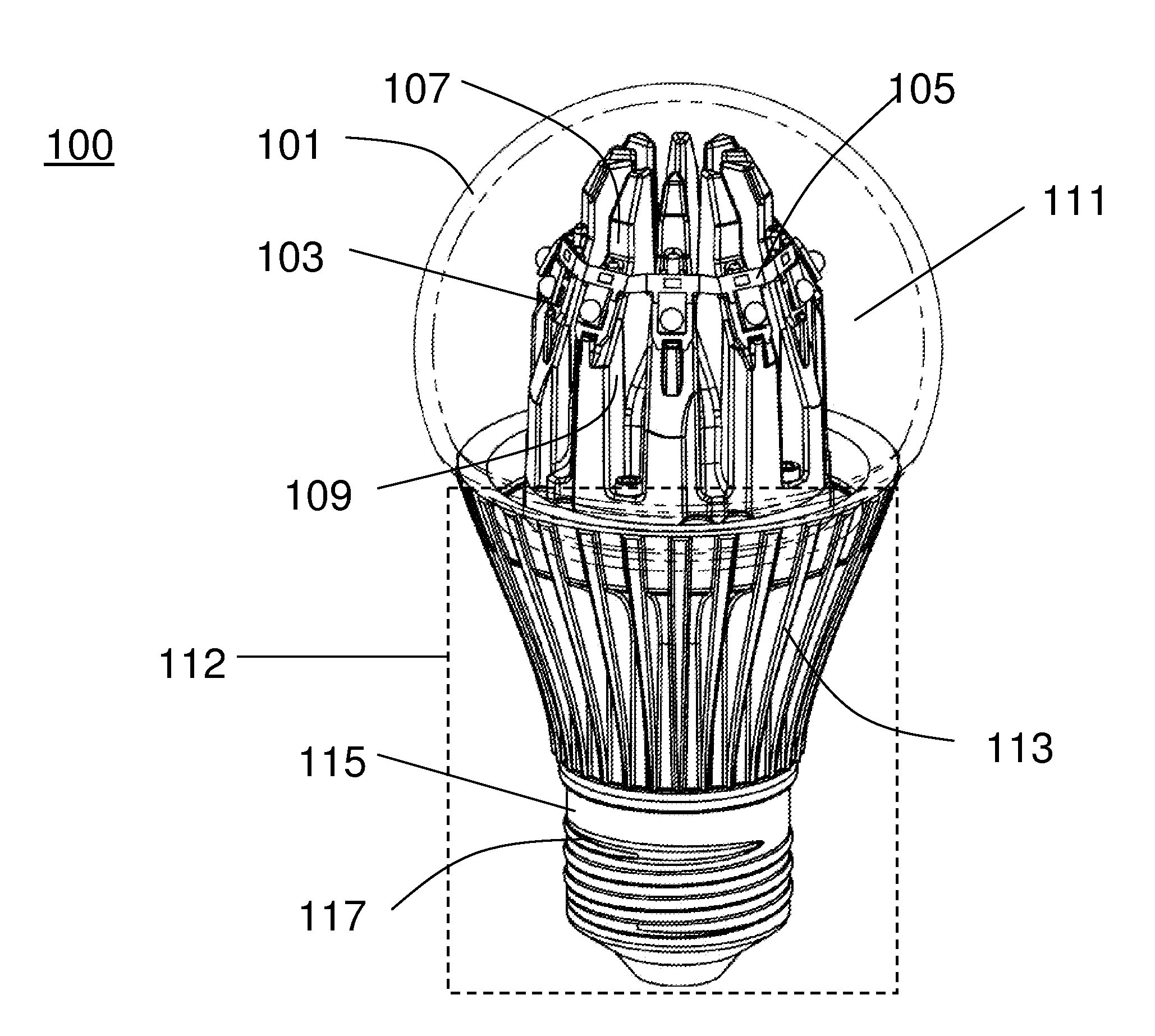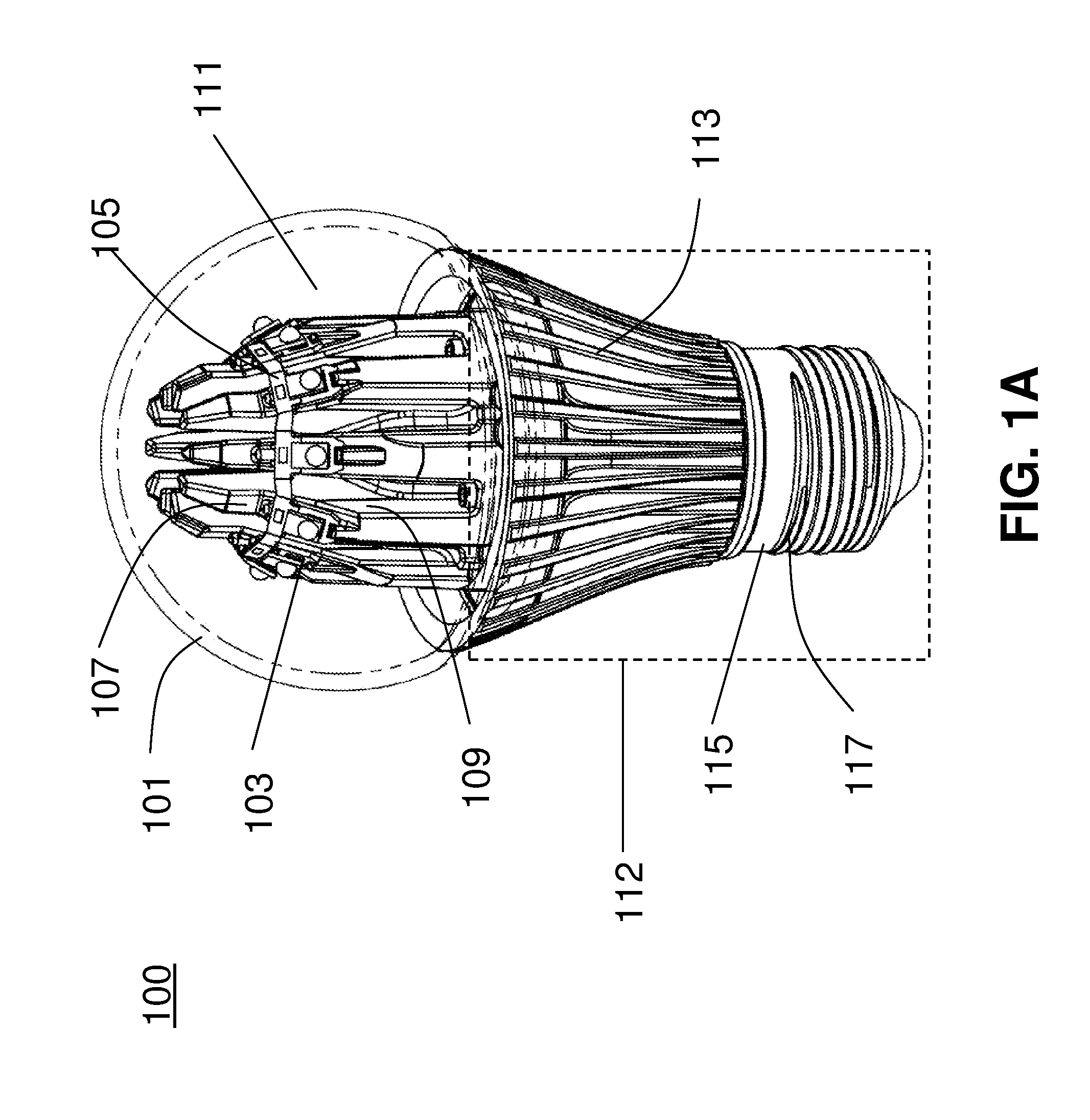Omni-directional channeling of liquids for passive convection in LED bulbs
a technology of led bulbs and liquids, applied in the direction of lighting elements, semiconductor devices of light sources, lighting and heating apparatus, etc., can solve the problems of % of power loss, inefficiency of incandescent bulbs, etc., and achieve the effect of facilitating a passive convective flow
- Summary
- Abstract
- Description
- Claims
- Application Information
AI Technical Summary
Benefits of technology
Problems solved by technology
Method used
Image
Examples
Embodiment Construction
[0016]The following description is presented to enable a person of ordinary skill in the art to make and use the various embodiments. Descriptions of specific devices, techniques, and applications are provided only as examples. Various modifications to the examples described herein will be readily apparent to those of ordinary skill in the art, and the general principles defined herein may be applied to other examples and applications without departing from the spirit and scope of the various embodiments. Thus, the various embodiments are not intended to be limited to the examples described herein and shown, but are to be accorded the scope consistent with the claims.
[0017]Various embodiments are described below, relating to LED bulbs. As used herein, an “LED bulb” refers to any light-generating device (e.g., a lamp) in which at least one LED is used to generate the light. Thus, as used herein, an “LED bulb” does not include a light-generating device in which a filament is used to g...
PUM
| Property | Measurement | Unit |
|---|---|---|
| temperatures | aaaaa | aaaaa |
| temperatures | aaaaa | aaaaa |
| angle | aaaaa | aaaaa |
Abstract
Description
Claims
Application Information
 Login to view more
Login to view more - R&D Engineer
- R&D Manager
- IP Professional
- Industry Leading Data Capabilities
- Powerful AI technology
- Patent DNA Extraction
Browse by: Latest US Patents, China's latest patents, Technical Efficacy Thesaurus, Application Domain, Technology Topic.
© 2024 PatSnap. All rights reserved.Legal|Privacy policy|Modern Slavery Act Transparency Statement|Sitemap



